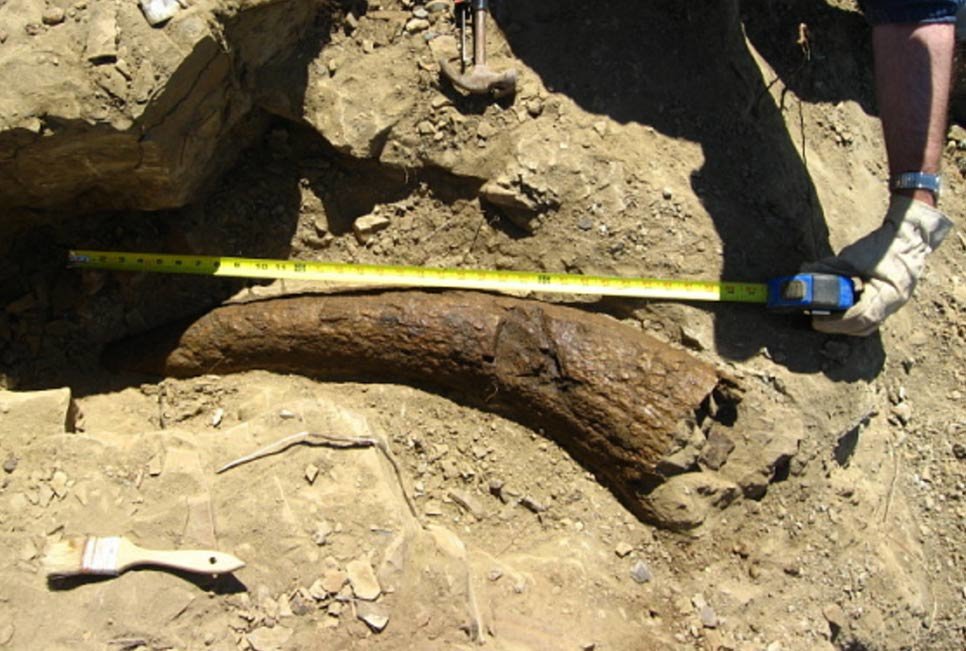
The Triceratops brow horn was excavated in May 2012 and stored at the Glendive Dinosaur and Fossil Museum. The Museum, which has since 2005 been in cooperation with the Paleochronology Group, a team of consultants in geology, paleontology, chemistry, engineering, and education, sent a sample of the outer portion of the Triceratops brow horn to Head of the Paleochronology Group Hugh Miller, at his request, in order to carry out Carbon-14 dating. Mr Miller sent the sample to the University of Georgia, Center for Applied Isotope Studies, for this purpose. The sample was divided at the lab into two fractions with the "bulk" or collagen break down products yielding an age of 33,570 ± 120 years and the carbonate fraction of bone bioapatite yielding an age of 41,010 ± 220 years [UGAMS-11752 & 11752a]. Mr Miller told Ancient Origins that it is always desirable to carbon-14 date several fractions to minimize the possibility of errors which Miller requested and that essential concordance was achieved in the 1000's of years as with all bone fractions of ten other dinosaurs.
Triceratops, a name meaning "three-horned face", is a genus of herbivorous ceratopsid dinosaur that is said to have first appeared during the late Maastrichtian stage of the late Cretaceous period, about 68 million years ago in what is now North America, and became extinct in the Cretaceous - Paleogene extinction event 66 million years ago. However, scientists from the Paleochronology Group, who perform research relating to "anomalies of science", maintain that dinosaurs did not die out millions of years ago and that there is substantial evidence that they were still alive as recently as 23,000 years ago.
Until recently, Carbon-14 dating was never used to test dinosaur bones, as the analysis is only reliable up to 55,000 years. Scientists never considered it worthwhile to run the test since it is generally believed that dinosaurs have been extinct for 65 million years, based on radiometric dating of the volcanic layers above or below fossils, a method which the Paleochronology Group states has "serious problems and gross assumptions must be made".
Read the remainder of the article here.



Humans were killing large mammals in North America long before 'Clovis culture', study of mastodon remains suggests
[Link]